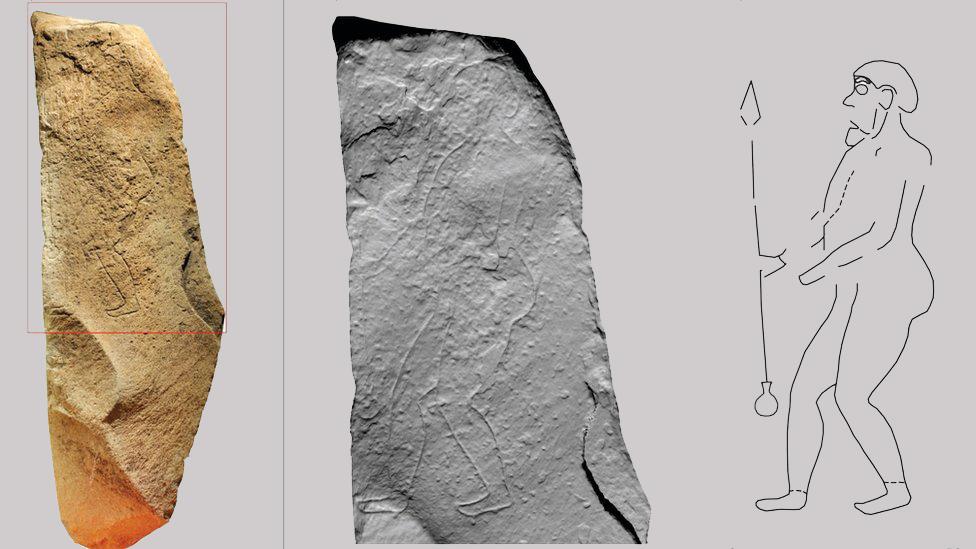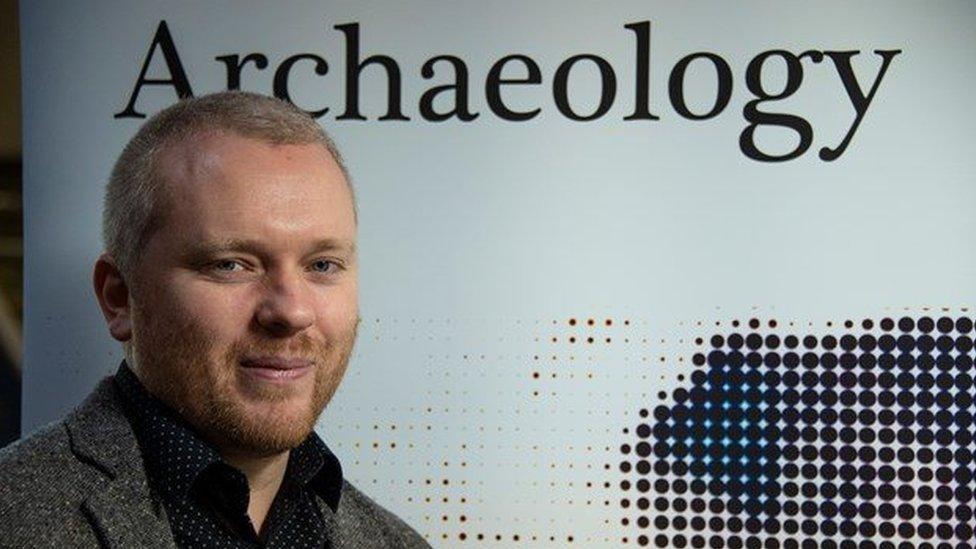Perth Pictish monolith sheds new light on warriors' history
- Published

Images of a Pictish warrior on a two-metre high monolith uncovered close to a Perth football ground have been recreated by archaeologists.
The stone, depicting a male figure carrying a spear, was found during construction of a road near McDiarmid Park in 2017.
An Aberdeen University team has now clarified the carving, external using 3D imaging.
They said the monolith, known as the Tulloch Stone, was a "significant find."
The stone will undergo further research and preservation before going on display at a new museum in Perth in 2022.
The research team said similarities between the stone and two others found at Rhynie in Aberdeenshire and Newton of Collessie in Fife are "filling the gaps" of Scotland's undocumented history.

Prof Gordon Noble said the monolith's discovery was a "significant find"
Prof Gordon Noble, head of archaeology at Aberdeen University, said looking at the three stones together led to the conclusion that the Tulloch carving was "clearly a depiction of a warrior."
He said: "Its find spot overlooks the coming together of the rivers Tay and Almond, a junction marked by a Roman fort and later a possible Pictish royal centre, suggesting the monolith might have been located in a cemetery of the elite.
"Because the presentation of the figures is standardised across all of the stones, it is likely that it represents a generic sacred image, rather than it being a depiction of someone buried there."

The discovery follows a similar find at Rhynie in Aberdeenshire
The professor said this bridged a "crucial gap in knowledge."
He said: "Although we know that warrior ideology is important for rulership, we haven't previously been able to demonstrate how that evolves through time in the period before the sixth and seventh centuries when we begin to get historical records for Scotland."
Dr Mark Hall, archaeological curator at Perth Museum, said increased public awareness of Scotland's Pictish past had created new opportunities for study.
He said: "The workmen who scooped up this stone did well to realise that there was something on it and to alert the appropriate authorities.
"It is likely that there are more Pictish stones out there to be found and every new stone is a fantastic addition to the corpus."